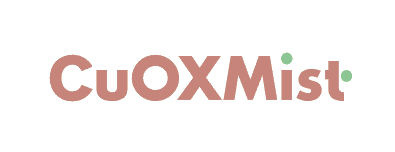Project CuOXMist

Project Supported by Higher Education Institutions (Gazi Univ)
CuOXMist - Ga2O3/Cu2O p-n junction production and related computational studies with p-type Cu2O semiconductor thin films grown by Mist-CVD
Project Information
- Date: Apr 2022 - Oct 2023
- Funded by: Project Supported by Higher Education Institution (Gazi Univ)
- Number: FGA-2022-7619
- Budget: 109 829.86 Turkish liras
Project Description

Abstract
Research on oxide materials has gained importance in recent years. While most of the oxide materials exhibit n-type semiconductor behavior, Copper (II) oxide (Cu2O) exhibits p-type oxide semiconductor behavior. Due to the rare p-type behavior, it is possible to produce single junctions with Cu2O or multiple p-n junctions with n-type layers such as ZnO, Ga2O3. Within the scope of the project, the electronic properties of undoped and doped Cu2O crystals will be calculated by density functional theory (DFT) for the first 6 months. It is planned to investigate the electronic properties of Cu2O crystals with different doping and to experimentally examine the doping that improves the p-type property from these dopings. In the literature, it has been observed that the addition of Magnesium (Mg) increases the conductivity of the Cu2O crystal.
Objectives
For this reason, it is planned to investigate computationally and experimentally Mg and similarly existing Zinc (Zn), Gallium (Ga) doping atoms. Calculations will be performed with GPAW DFT software running on Atomic Simulation Environment (ASE) and gpaw-tools as user interface written in Python language developed by our research group. The growths, which will start within the first 6 months, will be made with the mist vapor deposition method (eng. Mist-CVD), which is our own production. Mist-CVD is a liquid precursor based CVD method using metal salts, acetic acid and alcohols, which does not require vacuum, is economical, non-toxic and low cost used in the growth of many oxide materials. In the first 12 months, Cu2O crystals will be grown on soda-lime, ITO and FTO coated glass, SiO2/Si,c-Al2O3. In the last 6 months, p-n junctions will be created by using the n-type Ga2O3 grown with spin coating. It is planned to examine the effects of many experimental parameters on the growth behavior and physical properties of Cu2O crystals in growth. With this method, besides producing p-n junctions in a cheaper and more environmentally friendly way, it will pave the way for the establishment of a possible start-up company and obtaining a patent for mist-CVD device production.
Project Consortium
Project Team
- Prof. Dr. Sefer Bora Lisesivdin (PI) (Gazi Univ.)
- Prof.Dr. Beyza Lisesivdin (Gazi Univ.)
- Dr. Polat Narin (Ankara Yildirim Beyazit Univ.)
- MSc. Ece Kutlu-Narin (Ankara Univ.)
Other Colleagues, Students and Collaborations
- Tuğçe Han, MSc student (Gazi Univ.)
Project Structure
- Computational investigations of pure Cu2O crystal, Months Range: 1-6,
- Computational investigations of doped (Mg, Zn, Ga) Cu2O crystal, Months Range: 7-18,
- Equipment installation and substrate , gas and chemicals supply, Months Range:1-6,
- Optimization of the Mist-CVD system for Cu2O growth (growths on soda-lime substrate, examination of the additives obtained as a result of calculations), Months Range: 4-10,
- Growth of Cu2O thin films on ITO and FTO coated glass substrate, Months Range: 9-11,
- Cu2O growths on single crystal (SiO2/Si and c-Al2O3), Months Range: 11-13,
- Ga2O3 growth with spin coating, Months Range: 12-14,
- p-n junction production and characterization of with Ga2O3/Cu2O thin films, Months Range: 14-18,
Project News
Apr 2022
- Project is started.